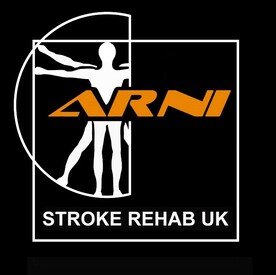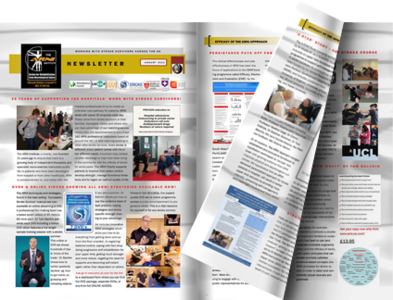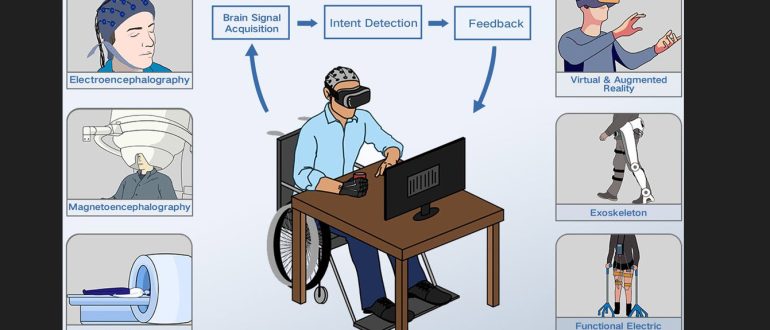5 Factors You Can Control in Stroke Recovery
Neurological rehabilitation is a complex process, influenced by many factors – most of which are outside of your control. You can’t control your age, how big your stroke was, or how severe your deficits are. You have limited control over your access to skilled therapy and whether you have a solid support network of friends and family in place. While this lack of control can leave you feeling helpless, there are some important aspects of your recovery that you can take responsibility for.
Here's how these 5 personal factors can impact your stroke recovery:
Recognition
In order to improve, first you must have awareness that there is a problem. If you think you speak just fine, it’s highly unlikely you’ll put in the time and effort required to change your speech. Some stroke and brain injury survivors are unaware they have problems with communication or cognition, a condition called anosognosia, so when they come to therapy, they don’t understand why they’re being asked to do the tasks. Building insight into the problem is an important first step in rehabilitation.
Motivation
After you recognize you have a problem, you must have the desire to change. If you know your speech is slurred but don’t care, why would you put in the time and effort to improve it? Some people lack motivation because they’re suffering from clinical depression, while some strokes physically damage the neural networks and dopamine pathways that control motivation. If you are feeling chronically unmotivated to improve a known impairment, talk to your doctor. And remember, it’s the person with the problem who must want to change – not just their family.
Determination
Having the desire to change is a great start, but you also need the resolve to do the work. Changing the brain is possible with repetition and time. There are no easy fixes, so if you really want to change, you have to be prepared to put in the effort – especially when it gets hard. Setting up small tangible rewards for yourself along the way can keep you moving forward when changes in your communication are harder to see.
Direction
You know there’s a problem, you want to change, and you’re ready to work hard – now you need a road map. This is where having a good therapist can help you set realistic goals, helping you know where you’re going and how to get there. You’ll receive instructions, exercises, or activities to help you improve.
Conviction
Deep down, you have to believe that change is possible. Hope is a powerful drug that makes therapy so much more effective. Some people hear from their doctors that they won’t get any better after 6 weeks, 3 months, 6 months, 1 year… These timelines are untrue and can destroy hope. Hope alone won’t make you better, but without hope, progress is rare.
www.arni.uk.com
#arnistrokecharity #strokesurvivorscan #strokesurvivors #strokerecovery #neuroplasticity #strokeexercise #neurorehab #strokerehabilitation #ARNIstrokerehab #neurorehabilitation
... See MoreSee Less
Dr Tom, a stroke survivor and the founder of ARNI Stroke Rehab UK Charity, doing a 130kg and then 140kg one-hand straddle deadlift grip-feat at Body Power. According to Google, a one-hand deadlift of 140 kg (308 lbs) is exceptionally good and a rare feat that demonstrates outstanding grip and overall pulling strength.
The one-handed nature of the lift dramatically increases the difficulty because it requires immense core and back stabilisation to counteract the twisting force of the uneven load as well as excellent grip strength. The lift is almost entirely limited by your raw, single-handed grip strength, which is generally much weaker than your overall back and leg strength.
To put this into perspective, a 140 kg one-handed deadlift is an unassisted lift that is an exceptional feat of strength that far exceeds the capabilities of most recreational lifters and even many dedicated athletes.
Strength Context
• Elite Grip Strength: Lifting 140kg with one hand is roughly equivalent to what many regular gym-goers struggle to lift with both hands.
• Comparison to Standard Deadlifts: For many males, a 140kg two-handed deadlift is considered a "respectable" intermediate milestone. Performing this same weight with a single hand puts you into an elite tier of grip and core stability.
• Bodyweight Ratio: If you weigh around 90kg (200 lbs), a one-handed deadlift of 140kg (approx. 1.5x bodyweight) is considered 'really good' by specialised grip training communities.
Why It Is Impressive
• Grip Challenge: The primary limiting factor in a one-hand deadlift is the hand's ability to hold the bar without it rolling out. A 140kg lift requires immense crushing and support grip strength.
• Core Stability: Because the load is asymmetrical, your obliques and core must work overtime to prevent your torso from collapsing or twisting under the uneven weight.
• Rarity: While common in strongman or specialised grip competitions, you will rarely see anyone in a commercial gym attempt or succeed at a one-hand deadlift of this magnitude.
... See MoreSee Less
🌍 Xmas-time test for ARNI Stroke Rehab UK post readers: where in the World Are Strokes Least Common? 🧠✨ Have you ever wondered which country leads the way in brain health? As of 2025, data from the World Health Organization and global health studies consistently point to Singapore as having one of the lowest stroke rates per capita in the entire world!
While genetics and environment play a role, the real secret to their success lies in a powerful combination of a high-tech healthcare system and a deeply ingrained culture of preventative living. In Singapore, there is a massive national focus on 'Healthier SG' initiatives that prioritise early screening for high blood pressure and diabetes, which are the two biggest culprits behind stroke events.
So, why is Singapore doing so well compared to many Western nations? A huge factor is the traditional diet, which remains naturally lower in processed sugars and saturated fats compared to the typical Western diet. More importantly, the government has taken bold steps to reduce salt intake across the population by encouraging the food industry to use lower-sodium alternatives in hawker centres and restaurants. When you combine this with an urban design that encourages daily walking and an incredibly efficient emergency response system that ensures stroke patients reach hyper-acute care within the golden hour, you get a recipe for some of the best survival and prevention rates on the planet! 🥗🏃♂️💨
ARNI Stroke Rehab says that the Singaporean model also shows us that reducing the salt in our daily meals is one of the cheapest and most effective ways to protect our arteries. By shifting our focus from just treating strokes to aggressively preventing them through small daily habits, we can work towards a future where the UK sees a major drop in these life-changing events...🤝💙💪
www.ar#ARNIstrokerehabtr#GlobalHealtho#SingaporeHealthp#brainhealthr#HealthyLiving2025L#BloodPressureAwarenesse#strokesurvivork#UKHealth #LearnAndGrowarnAndGrow
... See MoreSee Less
recovery from stroke may well taper off after a few months; a bit like a car battery going flat. However, incorporating cardiovascular exercise into your re-training has the ability to jump-start and keep the engine of your body’s recovery processes ‘ticking over’.
Cardiovascular exercise is defined as any type of exercise that gets your heart rate up and keeps it up for a prolonged period of time. It isn’t difficult to do and there are lots of options.
Not sure what to do? Call us on 0203 053 0111 or email support@arni.uk.com We have trainers throughout the country who can help you.
www.arni.uk.com
#StrokeRecovery #neuroplasticity #strokesurvivorscan #neurorehab #strokerehabilitation #strokerecovery #strokeexercise #exerciseafterstroke #neurorehabilitation #strokerecoveryexercises
... See MoreSee Less
ARNI Stroke Charity for stroke survivors, families and healthcare professionals: providing specialist rehabilitation and exercise support after hospital and community physiotherapy finishes.
www.arni.uk.com
#arnistrokecharity #strokesurvivorscan #strokesurvivors #strokerecovery #neuroplasticity #strokeexercise #neurorehab #ARNIstrokerehab #StrokeRehabilitation
... See MoreSee Less
🤖✨ Incredible strides are being made in neurosurgery as we head into 2025 - XCath are currently developing a groundbreaking robot-assisted approach to treating cerebral aneurysms to bring a level of superhuman precision to delicate brain procedures that was previously impossible.
By using robotic guidance, the system allows for smoother navigation through the brain's complex blood vessels, making treatments safer and potentially allowing even more physicians to perform these life-saving interventions in hospitals everywhere. 🏥💡
So, what exactly is a cerebral aneurysm and why is this robotic advance so vital? A cerebral aneurysm is essentially a weak or thin spot on a blood vessel in the brain that balloons out and fills with blood. The real danger lies in the fact that these 'bulges' can put pressure on nerves or brain tissue, but even more seriously, they can leak or rupture.
When an aneurysm bursts, it causes a specific and very dangerous type of stroke known as a Subarachnoid Haemorrhage (SAH). Dr Tom himself of ARNI had one of these, This is where blood leaks into the space surrounding the brain, which can lead to permanent brain damage or be life-threatening if not treated with extreme speed and accuracy. In fact the stats are that 509% of people with SAH die and the rest suffer serious sequalae, like residual paralysis. 🩸🚑
The beauty of the XCath robotic system is that it helps surgeons treat these aneurysms before they have a chance to rupture, or helps them repair the damage with incredible stability if an SAH has already occurred. By enhancing the precision of how stents or coils are placed to block off the aneurysm, the robot reduces the margin for error in these high-stakes procedures.
ARNI Stroke Rehab UK says that this innovation significantly lowers the risks associated with traditional manual surgery 🙏💪💙
w#ARNIstrokerehabA#xcatho#MedicalInnovationd#strokepreventiont#brainaneurysm #SubarachnoidHaemorrhagen#HealthTech2025##RoboticSurgery##hopeforsurvivorsopeForSurvivors
... See MoreSee Less
Dates for the 2026 ARNI instructor course are now available
This is the ONLY FUNCTIONAL REHABILITATION & EXERCISE TRAINING QUALIFICATION CURRENTLY AVAILABLE IN THE UK which teaches experienced therapists and exercise instructors how to continue the rehabilitation path of stroke and other acquired brain injury survivor.
The course if for therapists and exercise instructors who are Level 3 and above or suitably qualified – who wish to teach functional rehabilitation & exercise training after stroke and receive regular recommendations/referrals from the ARNI Institute.
Find out more, and how to register for the accreditation here arni.uk.com/instructors/
2025 prices for the 2026 course if you pay for it in 2025
... See MoreSee Less
Sleep helps improve recovery after stroke by turning the short-term memories from the day’s rehab exercises into long-term memories.
If you fail to give your body the rest it needs, then your progress can go backward.
So make sure you get some ZZZs!
www.arni.uk.com
#strokesurvivorscan #neurorehab #neuroplasticity #arnistrokerehab #strokerehab #strokerehabilitation #strokeexercise #strokerecovery
... See MoreSee Less
Incredible news is coming out of Elgin as Dr Gray’s Hospital begins trialling a pioneering genetic testing device that's good news for stroke survivors: this cutting-edge technology has the potential to significantly reduce the risk of a patient suffering a second stroke by ensuring they are on the right medication from the very start 💙
About nine out of ten strokes are caused by blood clots. With this type of stroke the most prescribed drug is called Clopid ogrel. But blood thinners doesn't work for everyone because some people have a specific genetic variation that makes them resistant to the treatment.
In the past, finding out if a patient was resistant could take days or even weeks while waiting for lab results, but thanks to this new device, the team (pictured) at Dr Gray’s can now get an answer in just 70 minutes!
This rapid turnaround means that doctors can immediately switch a patient to an alternative, more effective medication if they show signs of resistance, providing them with the best possible protection during that critical early recovery phase. 🏥⏱️
This trial is about a move away from a one-size-fits-all approach and instead, tailoring treatment to a patient's unique genetic makeup. By identifying the right drug in just over an hour, the hospital is drastically improving the safety and peace of mind for survivors who are at their most vulnerable. 🙏💪💙
www.arni.uk.com
#ARNIStrokeRehab #StrokePrevention #DrGraysHospital #MedicalInnovation #GeneticTesting #StrokeSurvivor #HealthTech2025 #Elgin #PersonalisedMedicine #CuttingEdgeCare
... See MoreSee Less
What's the perfect present for a stroke survivor?
An ARNI online video. Or maybe the whole set?
And with online streaming you don't even need to wait for them to be delivered.
arni.uk.com/product-category/arni-recommended/
... See MoreSee Less



